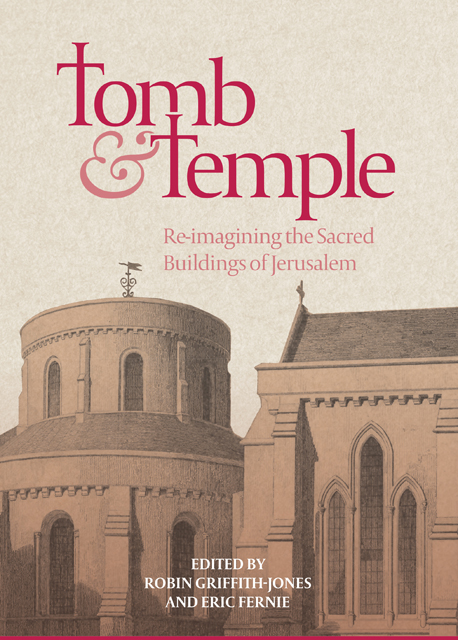Book contents
- Frontmatter
- Contents
- Illustrations
- Preface
- Contributors
- Abbreviations
- Editors’ Note
- Introduction
- Part I Re-presenting Jerusalem
- Part II The Church of the Holy Sepulchre
- Part III The Noble Sanctuary / The Temple Mount
- Part IV The Orthodox Churches
- Part V Round Churches in the West
- Appendix: The Knights’ Effigies: Newly Discovered Drawings by John Guillim, c. 1610
- Epilogue
- Index
- Already Published
Epilogue
Published online by Cambridge University Press: 17 January 2023
- Frontmatter
- Contents
- Illustrations
- Preface
- Contributors
- Abbreviations
- Editors’ Note
- Introduction
- Part I Re-presenting Jerusalem
- Part II The Church of the Holy Sepulchre
- Part III The Noble Sanctuary / The Temple Mount
- Part IV The Orthodox Churches
- Part V Round Churches in the West
- Appendix: The Knights’ Effigies: Newly Discovered Drawings by John Guillim, c. 1610
- Epilogue
- Index
- Already Published
Summary
Paula fell down and worshipped before the cross as if she could see the Lord hanging on it. On entering the tomb of the resurrection she kissed the stone which the angel removed from the Sepulchre door; and then like a thirsty man who has waited long, and at last come to water, she faithfully kissed the very shelf on which the Lord’s body had lain. Her tears and lamentations are known to all Jerusalem – or rather to the Lord himself to whom she was praying.
– Jerome, Letter 108.9.2–3In this book we have viewed, first and foremost, the Christian monuments themselves, with secondary reference to those who imagined them from afar, who travelled dangerously to them, who worshipped or served in them. It is time, in closing, to repopulate Jerusalem with its pilgrims. We recall the Ethiopian community perhaps already established in the sixth century; St Davit Garejeli for whom the city was too holy to enter; and the Western pilgrims from Jerome’s Paula to Felix Fabri who spent a day gathering pebbles and thorn-twigs between Mount Zion and the Mount of Olives. Thanks to Robert Hillenbrand’s chapter, we can envision too the sensory experience, in Muslim devotion, of the Dome of the Rock.
Jerome’s account of Paula (who travelled with him in 386 CE) is an obituary, and focuses more than most pilgrim accounts and guide-books on emotions. There was a continuity across space and time that might be alien to our more atomised and disenchanted age. Great visitors of the past could inform the experience of their successors, and inspire those who never got to Jerusalem themselves. Rituals and experiences were taken home from Jerusalem, nurtured as local traditions and then brought back to Jerusalem in hope and expectation by later generations. Memory of Jerusalem was a memory of the past, the present and the promised future, all defined and animated at home by local liturgies and processions, churches’ design and decoration, relics and guide-books.
Jerome’s account of Paula had an abiding influence. Amalarius (775–850) compared his own Good Friday veneration to the reaction of Paula when, with Jerome, she saw the cross. She was ‘“prostrate before the cross as if she saw the Lord hanging there”; I, lying before the cross, have Christ’s suffering for me written on my heart [2 Cor. 3.3].’
- Type
- Chapter
- Information
- Tomb and TempleRe-imagining the Sacred Buildings of Jerusalem, pp. 479 - 484Publisher: Boydell & BrewerPrint publication year: 2018

